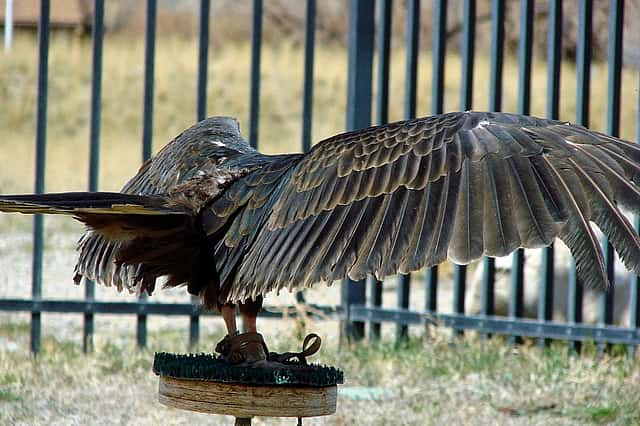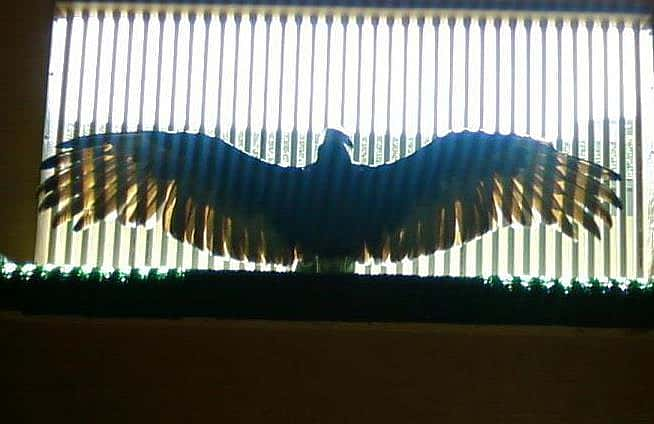
Flying for Real, training season
Well, the first of April has come and gone and we here at the Draper Museum Raptor Experience are officially in the “training season” for our summer programs. That sounds pretty impressive, right? Maybe not so much. What it means is that we are flying Hayabusa the peregrine falcon daily for exercise and Suli the turkey vulture is in training. With the training comes weight management and strategic planning on what we can honestly expect from her this summer.
Thus far Suli has been pretty shy flying outside (don’t worry, she’s on a really long leash) and with a few spectators. At the end of last week the wind drove us inside and I discovered quite a few interesting things: she prefers to fly inside (or seems to anyway), she does better with only one person flying her, and she prefers a platform perch rather than our regular a-frame perch.
With the new knowledge in hand, our training has gone great! She’s eagerly flying to both the perch and the glove and even managed fifteen flights yesterday! Haya is doing well also, consistently flying about three feet in distance, and we’re up to around seven flights per session. Not too shabby for a bird with such bad wing damage.
Written By
Melissa Hill
While earning her Bachelor's Degree in Wildlife Management at the University of Wyoming, Melissa began volunteering at Laramie Raptor Refuge and was instantly hooked on birds of prey. Since those early days, she has worked with nearly 70 different raptors at four different raptor education groups in three states. She is a former member of the Education Committee for the International Association of Avian Trainers and Educators (IAATE) and a National Association for Interpretation's Certified Interpretive Guide. When she's not "playing with the birds" she enjoys spending time quilting, crocheting, and exploring the Greater Yellowstone Ecosystem with her non-bird family.

